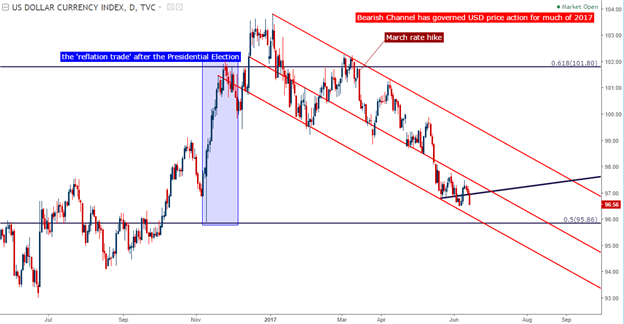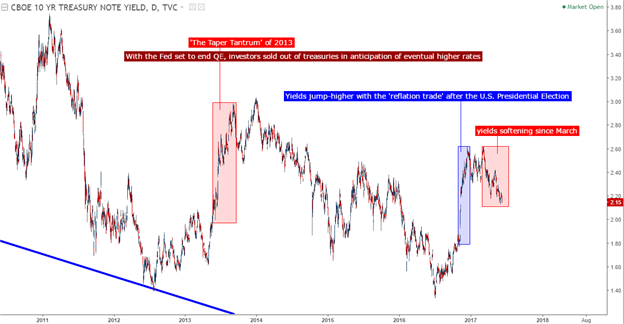Today at 2PM, the Federal Reserve will conclude their two-day meeting with the announcement of their interest rate decision. It’s widely expected that we’ll see the Fed adjust rates higher today, moving to a target of 1-1.25%; and this has been so expected for so long that we’ll probably see more drama if the bank doesn’t hike. But perhaps more pressing than today’s widely-expected interest rate hike is what the Fed says about their plans for the balance sheet and how many more rate hikes the bank might be looking at before the end of the year.
Coming into 2017, the ‘reflation trade’ was driving through global markets with bond yields moving higher in tandem with stock prices, even as expectations were building for even higher rates; which was, in turn, driving the U.S. Dollar-higher. The prevailing thought after the Presidential Election was that oncoming fiscal stimulus and tax cuts could offset the tighter borrowing conditions posed by a continuation of rate hikes that was afforded by this friendlier operating environment.
But as we turned the page into 2017, matters began to change…
The U.S. Dollar set a fresh 14-year high just two weeks after the Fed’s December rate hike, and has so far spent all of 2017 channeling-lower. The Greenback posed a quick run of strength from early-February leading into the Fed’s March rate decision: But after the bank hiked rates in March, the U.S. Dollar put in another bearish reversal, and has since continued to move-lower.

Chart prepared by James Stanley
This reversal isn’t relegated solely to currencies: We’ve seen this take place in bonds, as well. On the chart below, we’re looking at the reversal in the 10-year, which hastened around the March rate decision. We’ve also identified the ‘taper tantrum’ of 2013, as this will be relevant later in the article.

Chart prepared by James Stanley

